Some Very Cute Local Owls
Last month I visited some Burrowing Owls in Pinal County
Recently I visited some Burrowing Owls in Pima County. Every year I lead a field trip at the Southeast Arizona Birding Festival to see local Burrowing Owls. The Festival is always held the second weekend in August and in preparation for the field trip, I made a few scouting trips to the area to get a sense of how these local owls were doing. This year's group of four youngsters were out and about. On July 25th, here's what I saw:
Burrowing Owls are long-legged and are very comfortable on the ground. In fact, their name tells us that they "nest" in burrows underground. Additionally, they spend many hours during the daytime out and about. It's not the behavior we think about with owls but it is what Burrowing Owls do. I like how this owl seems to be strutting around assertively.
The plumage of juvenile Burrowing Owls is simple. They do not have the mottled or spotted look that adults have. Their underparts are plain and they do not have the streaking on their heads that adults do. One owl below is spreading its wings to dissipate heat. The other young owl is tilting its head to better assess what it is looking at. Birdnote explains this unusual head-turning behavior.
Now the one owl is standing taller to get a better look while its sibling is dipping down lower for another look. I remained in my car, shooting from the interior.
Here is a look at an owl from a different angle as it stands on an irrigation ditch, spreads its wings, and tries to get rid of some of its body heat. That day the temperature (in the shade) was well over 100°! In agricultural areas, Burrowing Owls often use burrows adjacent to and beneath irrigation ditches. The ditches provide good "roof" support. These owls may re-use burrows constructed by other animals and they may also work to excavate the burrows.
One week later I returned. Three of the juveniles stuck their heads out at the same time. The owl on the right wasn't excited to see me- it was just showing us another way birds give off heat on hot summer afternoons. Much like the effect that dogs get when panting, birds will breathe through their mouths, creating evaporative cooling in the process.
On this visit, the Burrowing Owls were beginning to develop their flight skills. They were hopping up and down, elevating a few feet at a time with each "flight". They never really flew forward but they were getting airborne.
This little owl got way off the ground before settling down again.
As it hovered, it had time to enjoy the view!!
Often some of the owls would perch deep in greenery next to their burrows. I imagine it was cooler and a bit more humid inside the plant. Still, this owl has its wings spread and it is breathing through its mouth.
Here is one of tht adults with two of the juveniles. The adult Burrowing Owl has thin white streaks on its head and its front is covered in barring or a mottled look. Every one of these owls is hot and mouth breathing.
On Friday August 8th, one week later, I returned with the participants in the Birding Festival field trip. At that time the young owls were clearly getting airborne and were flying up to 20 feet at a time. They flew back and forth above and along the irrigation ditch. They often hovered before landing, as if they were having to think hard about coming down properly.
I don't bring my camera along when I'm leading a field trip so I couldn’t record their flights. The owls' behavior was so engaging that a few days later I was drawn to return to watch the owls in flight. I had a great time that afternoon and have a few images to share with you soon!!!


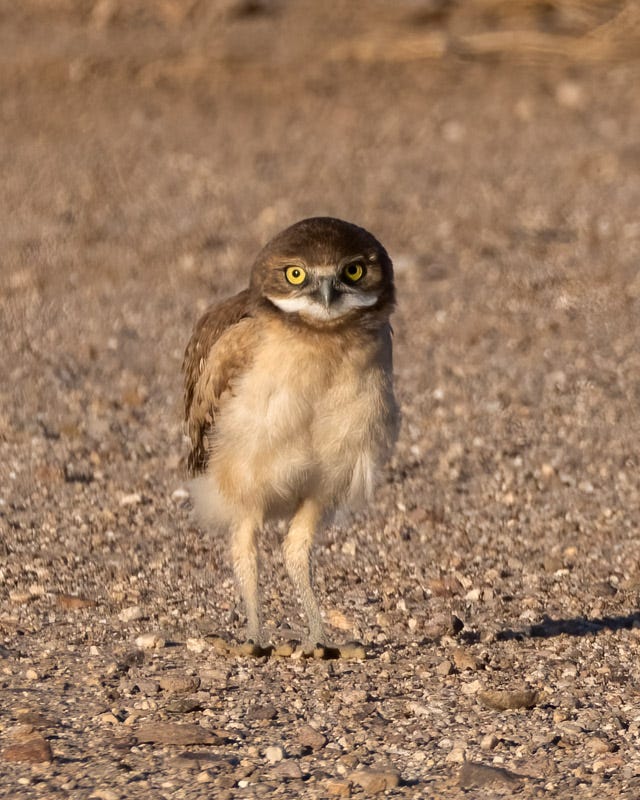
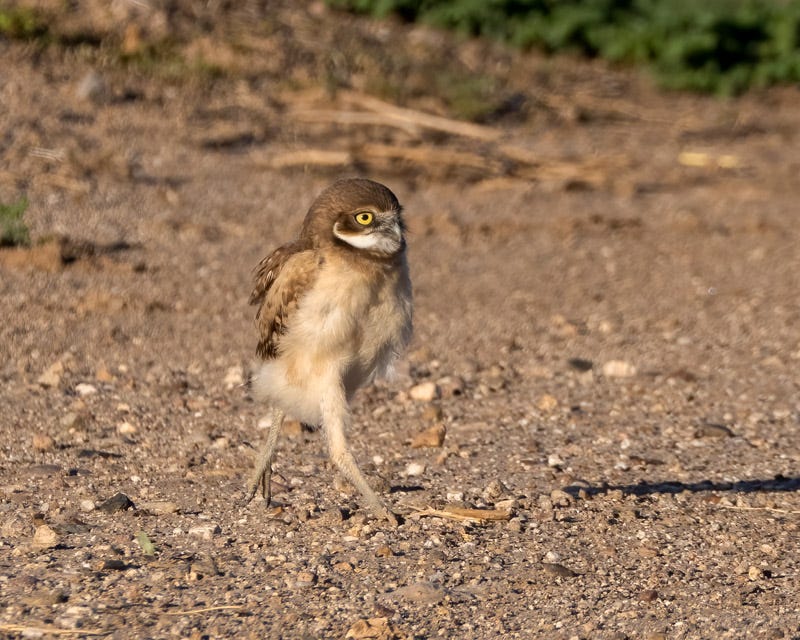
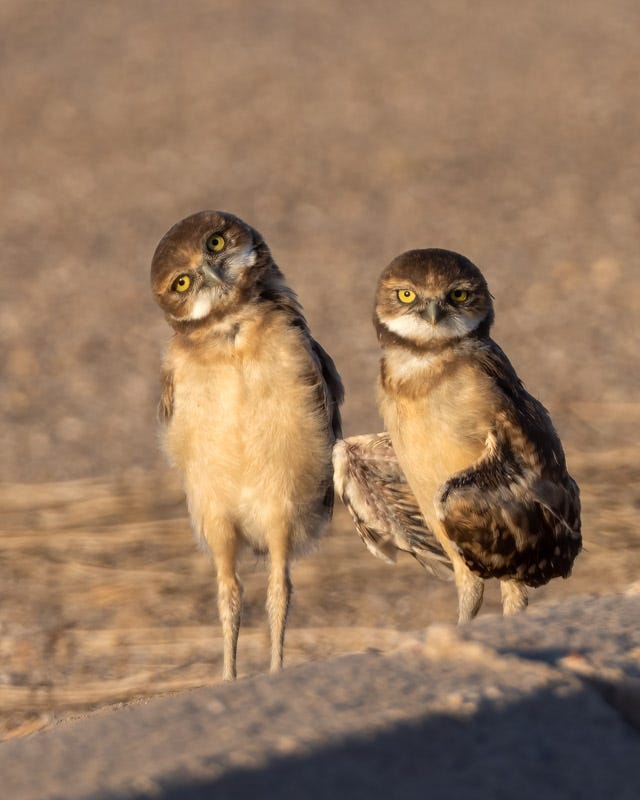
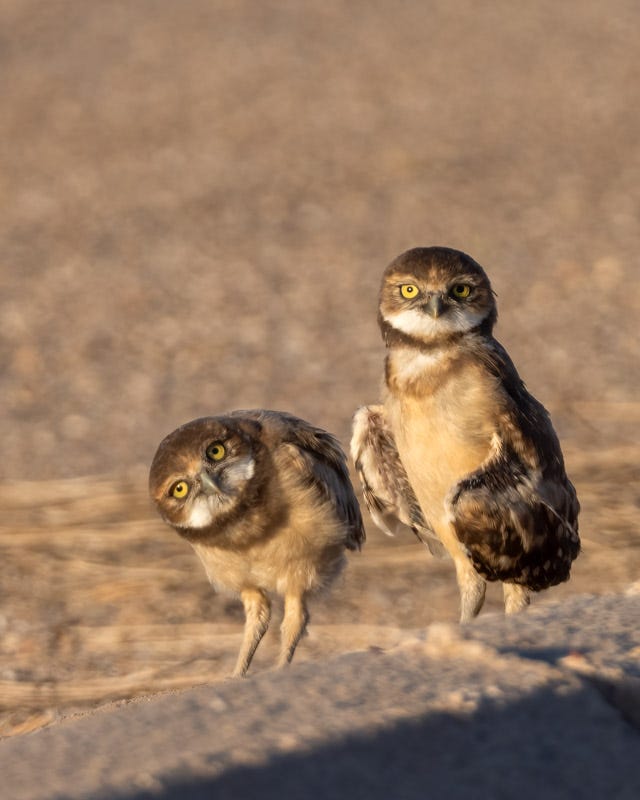
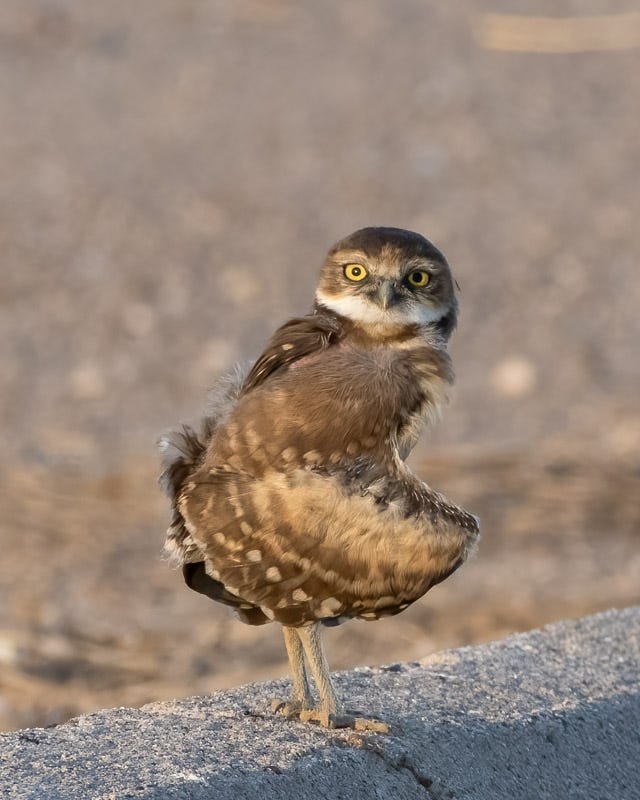
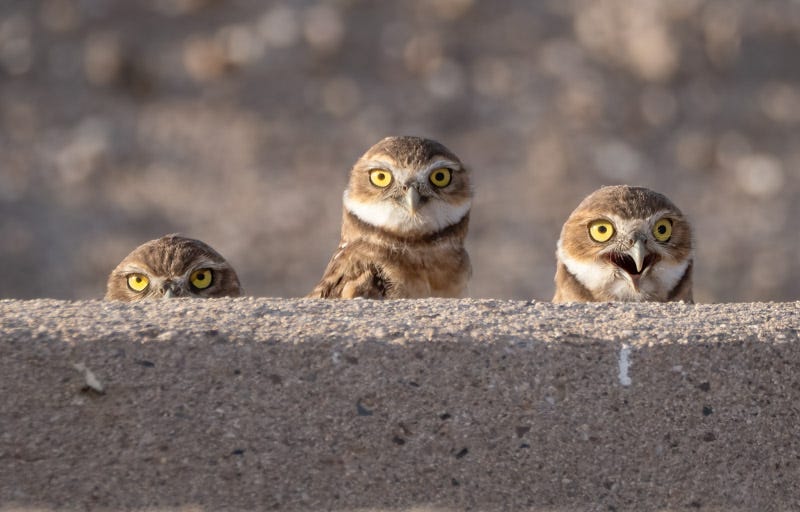
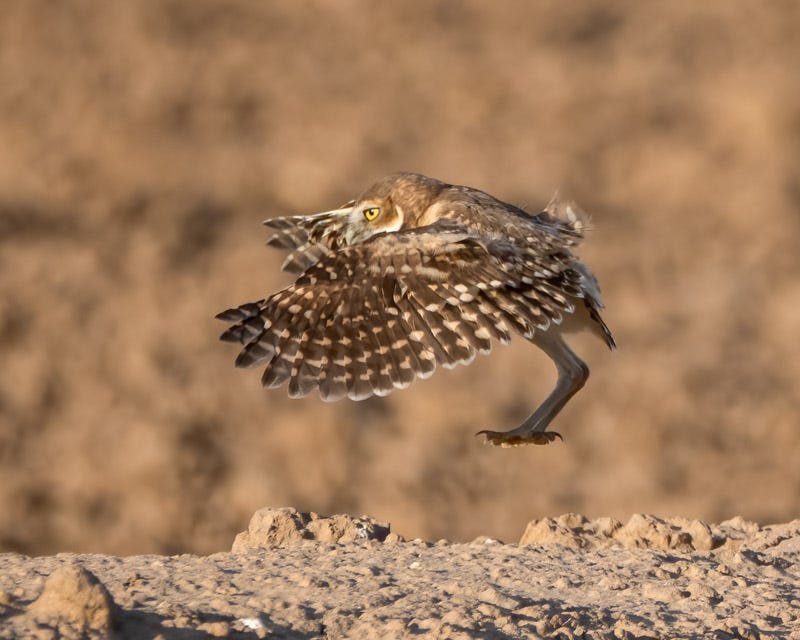
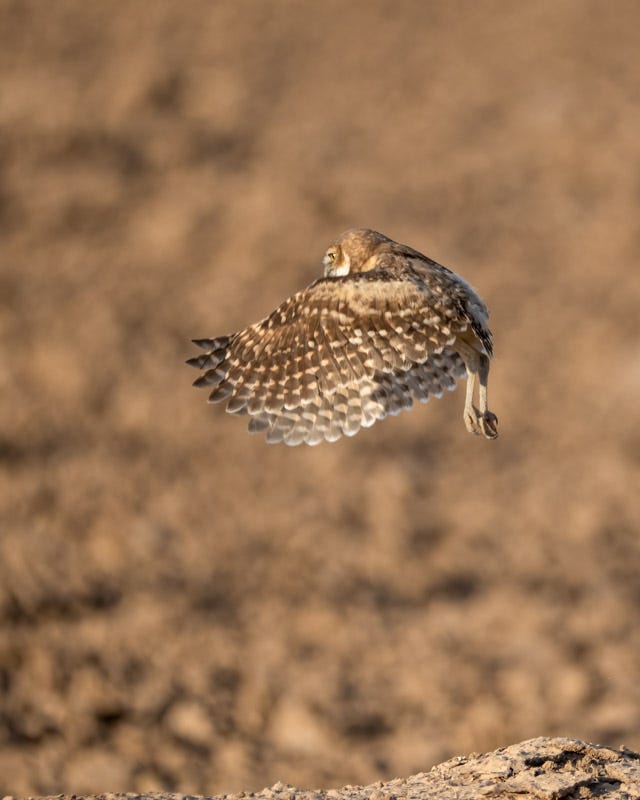
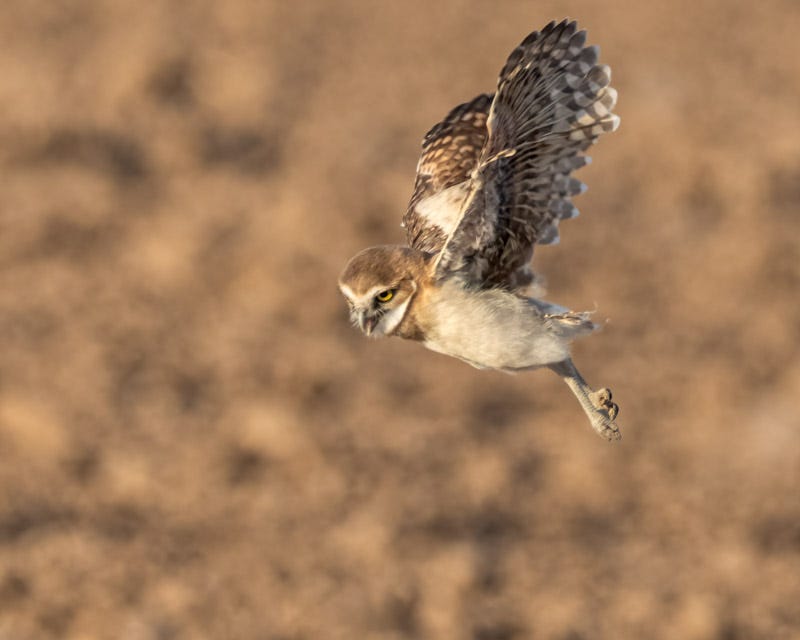
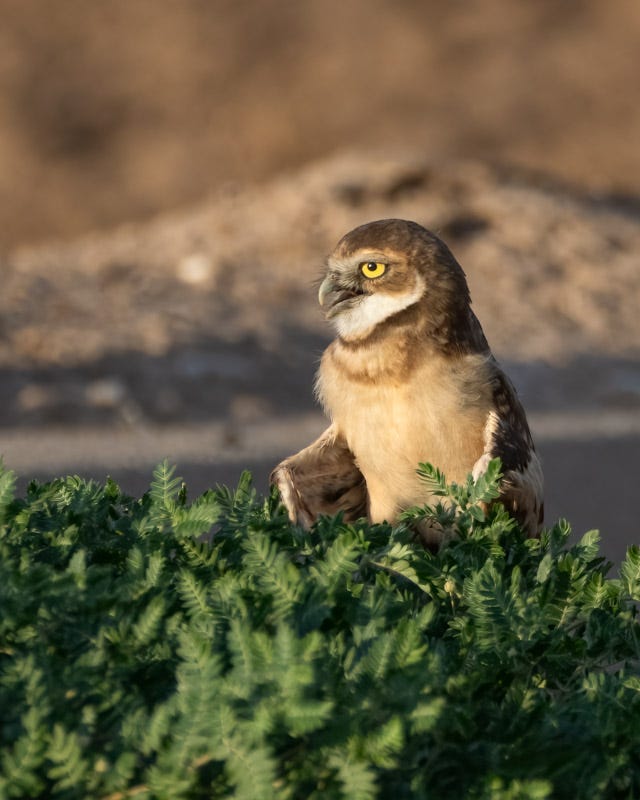
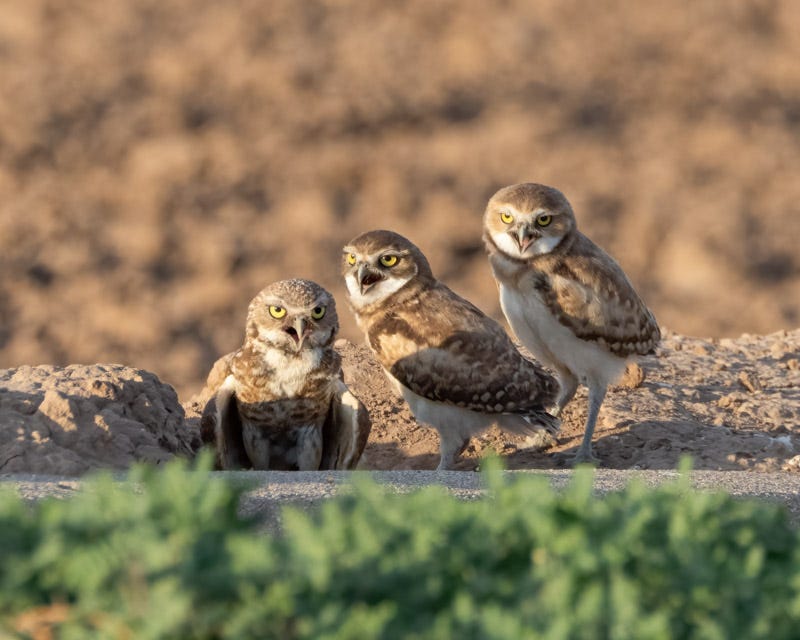
Thanks Dan! I love those burrowing owls!
I’ve seen Burrowing Owls many times, but never have I enjoyed so many antics, thank you!